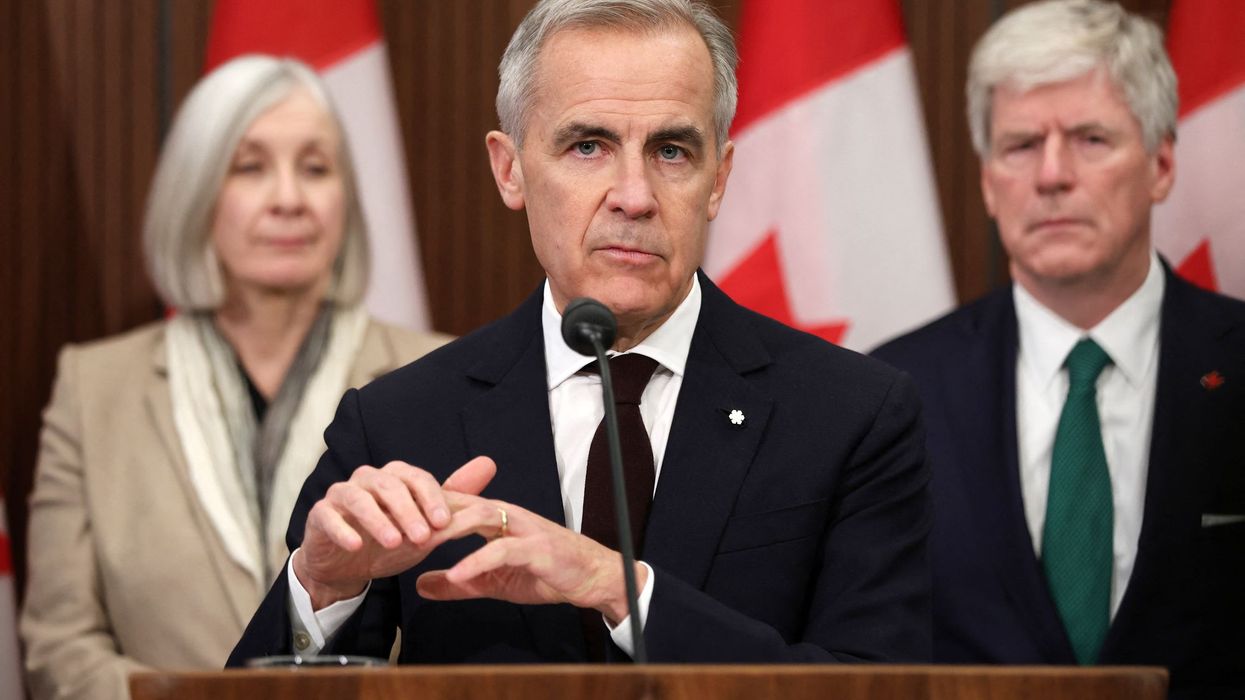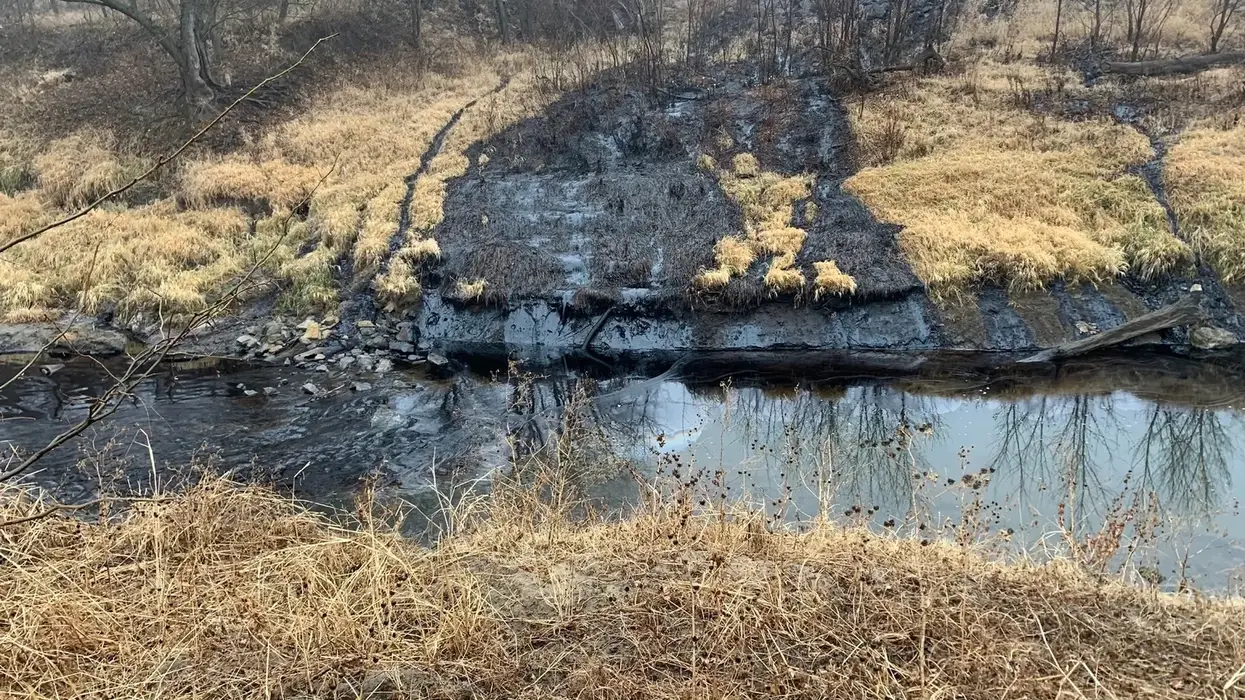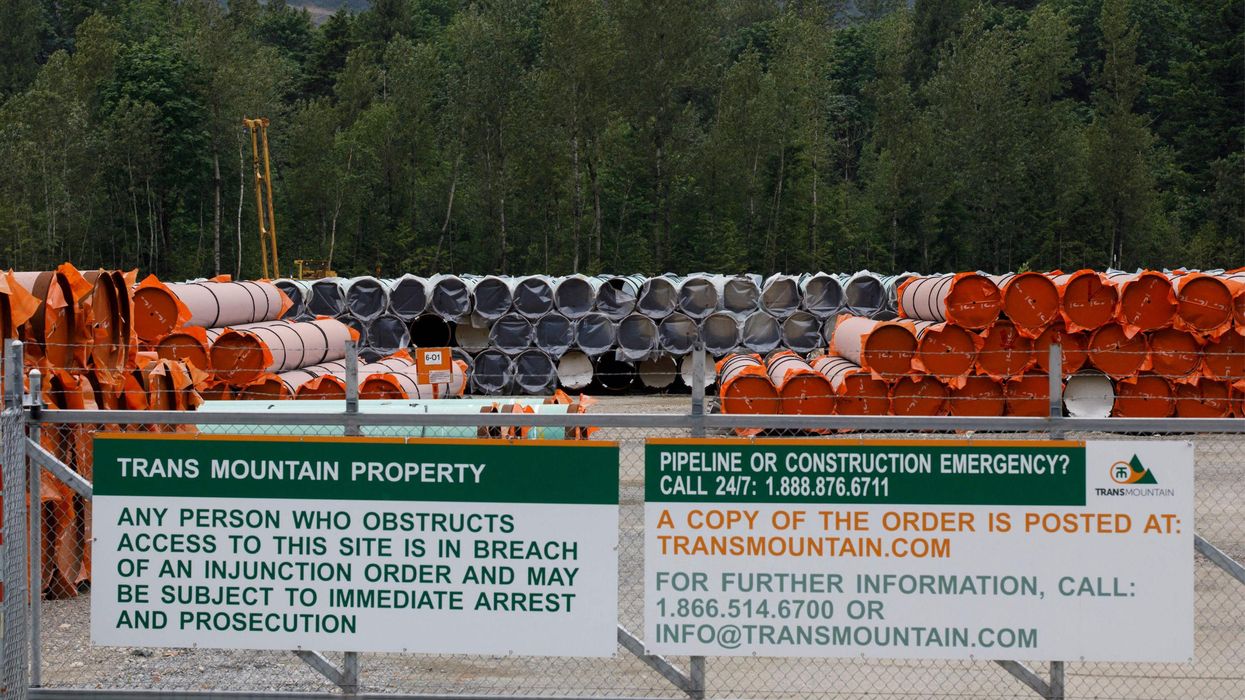'Sellout of the Century': Canada PM Carney Ripped Over Tar Sands Pipeline Deal
“We will use every tool in our toolbox to ensure that this pipeline does not go ahead,” said one First Nations leader after the deal struck between Prime Minister Mark Carney and the Conservative premier of Alberta.
First Nations groups backed by environmental and conservationist allies in Canada are denouncing a pipeline and tanker infrastructure agreement announced Thursday between Liberal Prime Minister Mark Carney and Conservative Alberta Premier Danielle Smith, calling it a betrayal and promising to fight its implementation tooth and nail.
“We will use every tool in our toolbox to ensure that this pipeline does not go ahead,” said Heiltsuk Nation Chief Marilyn Slett in response to the Carney-Smith deal that would bring tens of millions of barrels of tar sands oil from Alberta to the coast of British Columbia for export by building new pipeline and lifting a moratorium against oil tankers operating in fragile British Columbia coastal water.
While Carney, who argues that the pipeline is in Canada's economic interest, had vowed to secure the support of First Nations before finalizing any agreement with Alberta, furious reactions to the deal made it clear that promise was not met.
Xhaaidlagha Gwaayaai, the president of the Haida nation, was emphatic: "This project is not going to happen."
The agreement, according to the New York Times, is part of Carney’s "plan to curb Canada’s trade dependence on the United States, swings Canadian policy away from measures meant to fight climate change to focus instead on growing the oil and gas industry."
In a statement, the Union of British Columbia Indian Chiefs (UBCIC) "loudly" voiced its opposition to the memorandum of understanding signed by Carney and Smith.
"This MOU is nothing less than a high-risk and deeply irresponsible agreement that sacrifices Indigenous peoples, coastal communities, and the environment for political convenience," said Grand Chief Stewart Phillip, president of the UBCIC. "By explicitly endorsing a new bitumen pipeline to BC's coast and promising to rewrite the Oil Tanker Moratorium Act, the federal government is resurrecting one of the most deeply flawed and divisive ideas in Canadian energy politics."
Slett, who serves as secretary-treasurer of the UBCIC, said the agreement "was negotiated without the involvement of the very Nations who would shoulder those risks, and to suggest ‘Indigenous co-ownership’ of a pipeline while ignoring the clear opposition of Coastal First Nations is unacceptable."
Avi Lewis, running for the leadership of the progressive New Democratic Party (NDP) in the upcoming elections, decried the agreement as a failure of historic proportions.
"Carney’s deal with Danielle Smith is the sellout of the century: scrapping climate legislation for a pipeline that will never be built," said Lewis, a veteran journalist and climate activist. "We need power lines, not pipelines. Our path is through climate leadership and building good jobs in the clean economy."
Carney’s deal with Danielle Smith is the sellout of the century: scrapping climate legislation for a pipeline that will never be built.We need powerlines, not pipelines. Our path is through climate leadership & building good jobs in the clean economy.
[image or embed]
— Avi Lewis (@avilewis.ca) November 28, 2025 at 12:05 AM
In response to the deal, the minister of Canadian culture, Steven Guilbeault, who formerly served as environment minister under the previous Liberal administration, resigned in protest.
“Despite this difficult economic context, I remain one of those for whom environmental issues must remain front and center,” Guilbeault said in a statement.
"Over the past few months, several elements of the climate action plan I worked on as Minister of the Environment have been, or are about to be, dismantled,” he said. “In my view, these measures remain essential to our climate action plan.”
David Eby, the premier of British Columbia who opposes the new pipeline into his province and was not included in the discussions between Carney and Smith, echoed those who said the project is more dead than alive, despite the MOU, calling it a potential "energy vampire" that would distracts from better energy solutions that don't carry all the baggage of this proposed project.
“With all of the variables that have yet to be fulfilled—no proponent, no route, no money, no First Nations support—that it cannot draw limited federal resources, limited Indigenous governance resources, limited provincial resources away from the real projects that will employ people,” Eby added.
Keith Brooks, the program director at Environmental Defence, decried the deal as "worse than we had anticipated" and "a gift to the oil industry and Alberta Premier Smith, at the expense of practically everyone else."
"Filling this pipeline and expansion would require more oil sands mining, leading to more carbon pollution, more tailings, and worse impacts for communities near the tar sands," warned Brooks. "The pipeline to BC would have to cross some of the most challenging terrain in Canada. The impacts of construction would be severe, and the impacts of a spill, devastating."
Jessica Green, a professor at the University of Toronto focused on environmental politics, equated the "reckless" deal to a "climate dumpster fire" and called the push for more tar sands pipelines in Canada "the energy equivalent [of] investing in VHS tapes in 2025."
At least the United States under President Donald Trump, she added, "has the cojones to say it doesn’t give a shit about climate" while Carney, despite the contents of the deal with Alberta, "is still pretending that Canada does."


